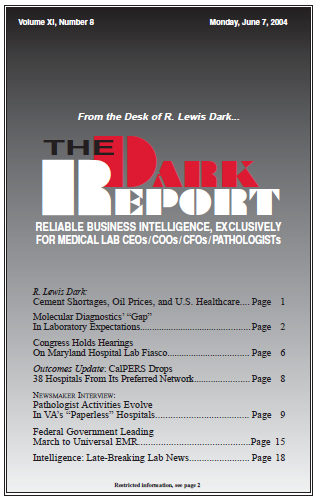CEO SUMMARY: This year’s Executive War College provided strong evidence that the twin trends of molecular diagnostics and Lean management methods are taking root within the laboratory industry. Each is a trend in its infancy. Molecular diagnostics will require considerable time before it exerts substantial impact on labs across the country. In contrast, Lean management …
Molecular Diagnostics’ “Gap in Expectations” Read More »
To access this post, you must purchase The Dark Report.


